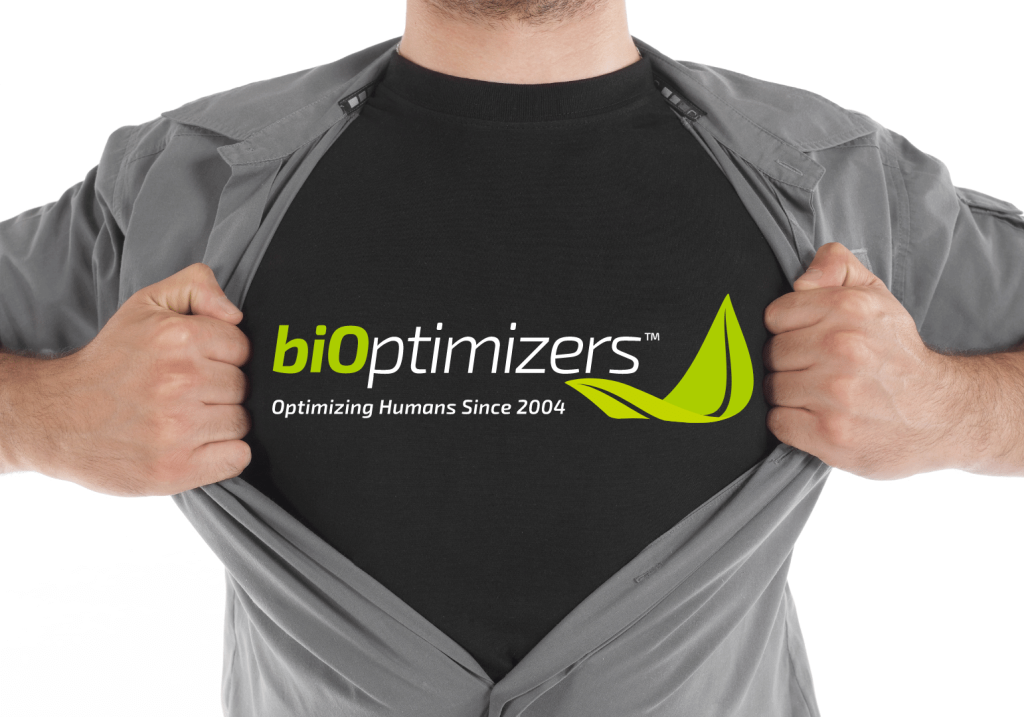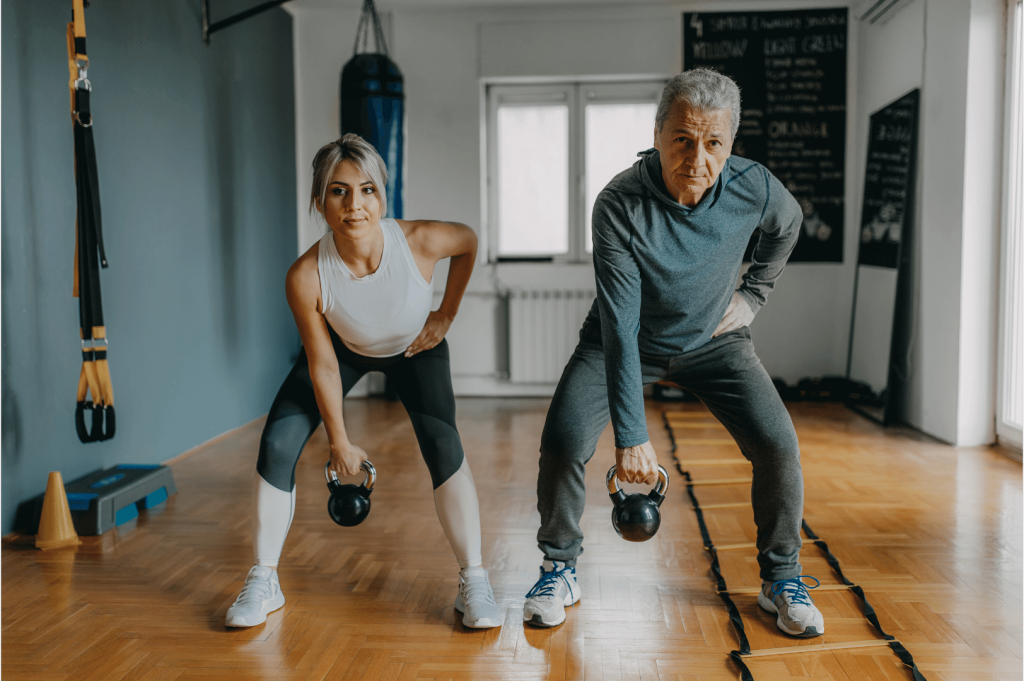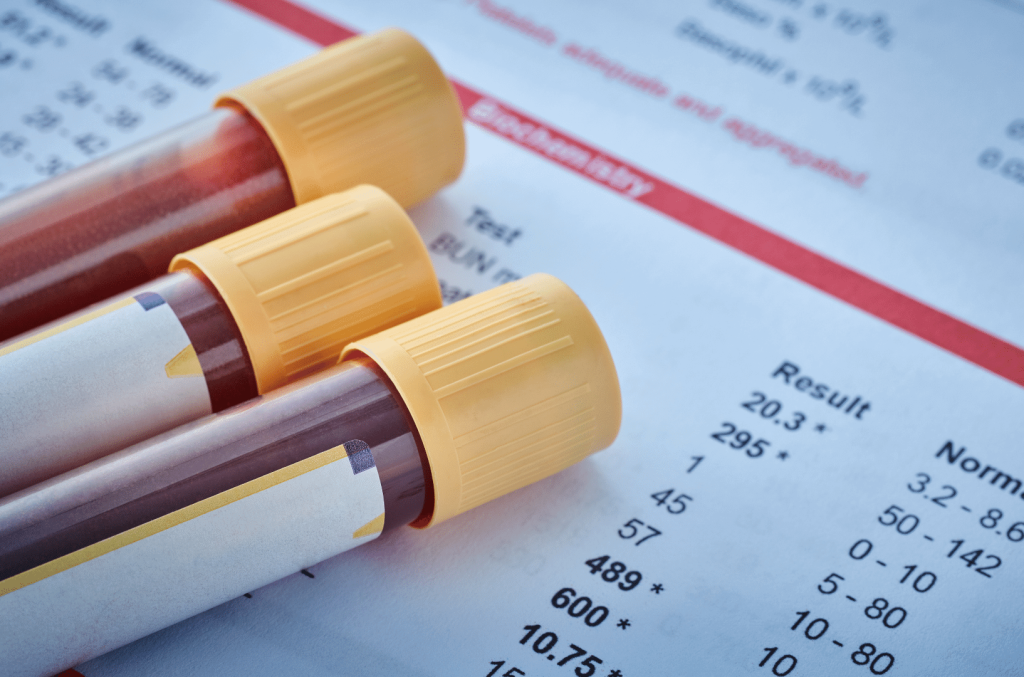
The Journey of Biological Optimization or the Kaizen of Becoming a Superhuman


The Journey of Biological Optimization or the Kaizen of Becoming a Superhuman
While there is a place for dramatic health changes, trying to make big changes overnight while expecting immediate results often ends in frustration and feelings of failure.
After decades of health-themed products and promotions, it can feel like your health optimization should happen rapidly. And it can. But here at BiOptimizers, we don’t just want to see your health improve in the short-term. This is how it works when you invest in working with qualified health coaches.
We want to see you adopt a process of continual assessment and self-improvement where you set realistic short-term goals, with the long-term focus of becoming a biologically optimized superhuman. We call this continual process of change and growth “the kaizen of health optimisation”.
What You’ll Learn
- How to know if a certain biohack, diet, or supplement is really bringing you toward Biological Optimization
- The kaizen (iterative and gradual) approach to biological optimization
- Our unique 3-step framework centered around kaizen that has helped thousands of people from all walks of life and different stages of health achieve biological optimization
What Is Kaizen In Biohacking And Health Coaching?

So you now know that optimizing your health will take time, and if done right, it will be a process that continues the rest of your life. Sounds daunting, doesn’t it? But here’s the thing: you don’t have to tackle it all at once. We refer to the process of making iterative, stackable changes over time for lasting improvement as the kaizen of health optimization.
Kaizen literally translates to continual improvement. Defined by the founder of the KAIZEN Institute, Masaaki Imai, kaizen means, “continuing improvement in personal life, home life, social life, and working life”.
American and Japanese business experts first coined the term as a methodology to streamline Japanese industrial production after World War II. Since then, business experts and entrepreneurs have used kaizen to install workplace systems that continually get better.
However, kaizen doesn’t just apply to big business organizations. Continual improvement can be applied to every facet of life, as Imai so impactfully stated. Let’s take a deep dive into what it would look like to apply the principle of kaizen to health optimization and becoming a superhuman.
The Kaizen Of Becoming A Superhuman
The founders of BiOptimizers, Matt Gallant and Wade Lightheart, followed a kaizen approach for their own health. After 20 years of walking their own health optimization journeys and coaching countless clients to success, Matt and Wade have boiled down their kaizen process to a 3-step framework:
- Assess
- Test
- Optimize
Let’s take a deep dive into this 3-step health optimization process
Assess
Before you can start reforming your health, you need to assess where you are right now. Sometimes people can shy away from assessing their health in any way because sometimes the results can make them feel like they are failing in their own self-care.
However, psychologist Carl R. Rogers poignantly stated, “The curious paradox is that when I accept myself just as I am, then I can change.” This quote helps provide a purpose for assessment: it allows you to see exactly where you are and accept yourself right there. You can’t achieve the superhuman health you desire if you don’t first take a look at where your health is right now.
Moreover, you can’t improve what you can’t measure. Assessments let you track individual metrics that give insight into your overall health status. Once you’ve got a good picture of where your health is at now, you can move on to initiating real, long-term changes through a step-by-step kaizen-centric approach.
Two types of health data need tracking in order to paint that picture of your overall health: subjective and objective data.
Subjective Assessments
Subjective assessments allow you to qualitatively evaluate your overall health and wellness. While having objective data plays a massive role in giving clear metrics you can assess your health with, subjective data provides insight into how you specifically feel.
The vast majority of objective assessments compare your results with some sort of common standard. In contrast, subjective data shows not only where your health is at, but how you perceive your health. This kind of data proves critical to being able to understand and track with your inner self as you embark on your health optimization journey.
Some examples of subjective assessments include:
- Where you’re at with respect to your challenges
- Wellbeing
- Energy levels
- Mental, cognitive, and physical performance
- Mood
- Appetite and cravings
- Pain and any other symptoms
Objective Assessments
Objective assessments remain the gold standard in professional health settings. These assessments provide standardized metrics that can show you where specific aspects of your health are in relation to healthy measurements.
Some objective health assessments that can help you craft your health optimization blueprint include:
- Biofeedback data from smartphone apps or other devices, such as the Oura ring or fitness trackers
- Lab tests you discuss with your health practitioners
- Body composition measurements which can give you insight into the proportion of fat to muscle within your body
Let’s briefly dive into these different types of objective assessments.

Biofeedback Data
Here, we refer to biofeedback as any feedback your body is giving you. It can range from how you feel or perform in the moment, to metrics that require technology to measure.There are so many tools and apps available to track biofeedback data from the comfort of your own home and adapted to your unique lifestyle and rhythms.
One device Matt and Wade absolutely love for its biofeedback tracking abilities is the Oura ring, a literal ring you can wear around your finger that tracks:
- Heart rate variability (HRV) – provides a real-time measure of stress levels and recovery. Long-term low HRV correlates to increased risk of sickness and all-cause mortality.
- Body temperature – provides temp readings that can help estimate the quality of your metabolic function. Lower body temperatures can indicate metabolic issues that may stem from root causes like thyroid dysfunction.
- Sleep – tracks sleep quality by measuring how many hours of deep REM sleep you get per night. Many people do not get enough sleep each night. Also, both deep and REM sleep quality can decline with age. Resultantly, a working assessment of how much deep sleep you get each night can help you determine how to optimize your sleep quality.
By combining these metrics, the Oura ring can help provide you with a more objective estimate of how much energy you have and where you need to work on optimizing your activity and rest balance.
Lab Tests
Getting reliable, standardized labs done for a variety of different metrics can help you understand your body’s necessary optimization points on a molecular level. Most lab tests are simple blood, urine, and saliva-based tests that are pretty much painless with a result turnaround of two weeks or less (depending on the lab).

Some potentially helpful lab tests include:
- Hormones – lots of hormone markers can give insight into where you can optimize your health. Common hormone tests include sex hormones, stress hormones like ACTH and cortisol, thyroid hormones, and pancreatic hormones with insulin resistance markers.
- Inflammation and autoimmune markers – knowing if you have some sort of inflammation or autoimmune response in your body can help you be aware of obstacles on your path to health optimization. Helpful markers to check include CRP, histamine, MCP-1, adiponectin, and CD40L.
- Toxicity tests – like inflammation, exposure to toxic compounds can roadblock you as you strive to achieve superhuman health. Certain toxins to watch out for include mold and heavy metals.
- Complete blood count (CBC) tests – this very simple blood test measures quantitative indicators of both cardiovascular and overall health. Metrics provided by this test include red blood cell (RBC) count, other RBC health indicators like hemoglobin and hematocrit, platelet count, and WBC count. Often a differential WBC count will also be conducted, which gives info on your unique WBC ratios.
- Nutrigenomic tests – numerous nutrigenomic tests exist that can provide you with a better picture of what physiological parameters you can optimize to journey towards superhuman health. Consult with a nutrigenomics expert to explore what tests you may need.
- Gut biome tests – these give you the chance to peer into your unique internal microbial make-up. Tests like Viome provide mRNA data on the different organisms inhabiting your gut.
Make sure to discuss all potential tests and the results with your doctor or certified health practitioner. Testing all of these can be quite expensive, but a great starting point if you can afford it. In most cases, however, your practitioner should help you narrow down to the most impactful ones.
Body Composition Tracking
Tracking the proportions of fat to muscle cells, as well as tracking specific kinds of fat buildup, can provide a much clearer picture of health than standard BMI measurements. This kind of tracking is critical in order to assess both your body’s fat percentage and how you’re doing from a lean body mass point of view.
More high-tech options for body composition tracking include:
- DEXA (dual-energy X-ray absorptiometry) scans
- Skinfold caliper
- Hydrostatic weighing
- Bod Pod
You can also track body composition by taking body circumference measurements, though this method isn’t as reliable. Additionally, you can visually track body composition differences by taking pictures of yourself at regular intervals over time, especially as you kickstart your health optimization plan.

Read about other tell-tale signs of fat loss here.
Bridging The Gap Between Objective And Subjective Assessments
Over time, as you gain experience in your journey toward health optimization, you will be able to listen to and interpret the signals from your body. You will also see how these signals correlate with continual biofeedback and even lab test results. As a result, your ability to make subjective assessments will dramatically increase.
Test
Once you have a clear picture of your health in its current state, you can start creating your blueprint of the superhuman you. Remember, whatever plan you decide to implement to optimize your health needs to be completely tailored to your needs, schedule, and lifestyle. No two health optimization plans will look the same.
The testing phase has four basic steps:
- Hypothesize – decide on an aspect of your health you want to improve and write down the specific outcome you think will happen.
- Systematize – make sure you have a game plan moving forward with systems in place to keep you on track.
- Schedule – don’t keep saying “I’ll start tomorrow, or maybe next week.” Set a clear start date for when you want to test out a health improvement.
- Execute – all the planning and preparation in the world won’t take away from the fact that you just have to start. Matt and Wade both agree, “Even a poorly executed plan is much better than the greatest plan on earth that never gets executed.”
Optimize
Once you’ve implemented the right health improvements for you, you can continue to fine-tune your health and wellbeing. Keep in mind that the true spirit of kaizen is continual improvement, so optimizing your health can happen over the course of your lifespan.
Some parameters to consider when optimizing your health include:
- Diet structure and nutrition – so many experts all over the world tout this or that diet as being “the best”. As you optimize your health, zone in on which set of foods and eating routine works best for your nutritional needs. Learn more about how to optimize your diet by reading about the Pyramid of Nutritional Decisions.
- Feeding/fasting window – there are almost as many opinions on what good feeding/fasting cycles look like as there are about the best diet. Some people don’t feel well if they don’t eat regularly, others find that limiting eating time to a few hours a day improves their performance and overall health. Take your time in finding the right ratio that works for you.
- Calories – your personal goals will determine how many calories you want to be consuming each day. For muscle gain, you want to be in a calorie surplus. For weight and fat loss, you probably want a calorie deficit. And if you are just looking to maintain your super awesome health, you’ll want to stay at a slight deficit.
- Supplements – finding the right supplements for you can take your health to the next level. Each person responds differently to supplements, so make sure you use your subjective and objective data to determine which supplementation regime works best for you.
- Exercise – regular exercise can have profound effects on all sides of the BiOptimization triangle: aesthetics, performance, and health. Exercise starts steering your body towards health on a cellular and molecular level.
The Freedom To Reassess
Your journey of kaizen health optimization can and should be lifelong. Resultantly, you may find that you have to reassess parameters that change in relation to your circumstances or your body itself. Give yourself the freedom to reassess and start the process from the beginning when you feel like your health has plateaued or declined.
Creating Your “Jedi Council”
Additionally, the testing phase involves countless iterations of “trial and correction,” where you see what works best over time. That’s a big part of the kaizen approach that creates sustainable change long-term, but it can get frustrating and seem impossible without the right support.
To keep yourself on the right track to total health improvement, you may want to consider health coaching. You may also want to consult healthcare professionals with more experience in a specific area. And most importantly, you will need a good support network that can motivate you as you continue your kaizen health journey.
All of these different coaches, experts, and supportive people can become your own “Jedi Council,” that helps you continue to assess, test, and optimize your health.
What Is Health Coaching?
Working with a knowledgeable coach or healthcare professional can help you to set achievable short-term goals, keep you accountable, and help you celebrate your successes. Different coaching styles can work for different people, but many do well with a coaching style based in positive psychology.
A positivity-based coaching approach helps you focus and build on your strengths instead of just trying to “fix” your weaknesses. A randomized controlled pilot study with 44 participants found that a positive coaching approach helped participants lose from 5.7-9.6% of their initial body weight.
If you want to learn more about coaching for diet and fitness success, check out this article.

Other Important Healthcare And Wellness Professionals
Health coaches are great members to have on your Jedi health council that will motivate you to keep testing and optimizing. However, it is important to note that, according to the National Board of Health and Wellness Coaches based in the US, health coaches cannot diagnose, prescribe, or treat health issues.
That’s why you need other high-quality health professionals in your life. Examples of great healthcare professionals to bring on to your Jedi council include:
- General practitioner doctors
- Doctors specializing in a specific part of the body or organ system
- Naturopathic doctors
- Functional and integrative medicine doctors
- Nutritionists and dieticians
- Nurse practitioners
- Mental health care professionals like psychiatrists, clinical psychologists, and therapists
Other wellness professionals that can give you great insight and care on your journey towards biological optimization include:
- Chiropractors
- Physical therapists
- Practitioners of different therapeutic modalities like EFT
- Massage therapists
- Herbalists
- Traditional Chinese medicine practitioners
- Ayurveda practitioners
This is just the tip of the iceberg of all the highly trained healthcare and wellness practitioners that exist to help you. Choosing a practitioner can feel daunting, so having a health coach and general practitioner duo can help you narrow down which other health niches you need to focus on to optimize your health.
The Power Of Support Networks
Making any kind of positive change is difficult to do alone. That’s why having a support network around you can help you achieve true success in your health optimization journey. Social support has consistently been proven vital to overall health and wellbeing.
Your support network doesn’t have to be massive. You just need a few people who will continue to motivate you, celebrate with you, and have your back, especially when the going gets tough. Great people to include in your support network include:
- Friends
- Family members
- People who have walked on similar life paths to yours
We at BiOptimizers want to be a part of your kaizen health optimization journey. Therefore, we are offering access to some of our health experts to sit on your Jedi health council and guide you towards long-term, sustainable change. If you want to be one of the very few people who join an exclusive coaching program guiding you towards powerfully BiOptimized health, let us know.
References
- What is KAIZENTM. Kaizen.com. Accessed October 1, 2022. https://www.kaizen.com/what-is-kaizen
- Otsuka K, Jin K, Sonobe T, eds. Applying the Kaizen in Africa: A New Avenue for Industrial Development. Springer International Publishing; 2018.
- Albrecht G. Using subjective health assessments in practice and policy-making. Health Care Anal. 1996;4(4):284-292. doi:10.1007/BF02249315
- Zayyan M. Objective structured clinical examination: the assessment of choice. Oman Med J. 2011;26(4):219-222. doi:10.5001/omj.2011.55
- Peake JM, Kerr G, Sullivan JP. A critical review of consumer wearables, mobile applications, and equipment for providing biofeedback, monitoring stress, and sleep in physically active populations. Front Physiol. 2018;9. doi:10.3389/fphys.2018.00743
- Fang SC, Wu YL, Tsai PS. Heart rate variability and risk of all-cause death and cardiovascular events in patients with cardiovascular disease: A meta-analysis of cohort studies. Biol Res Nurs. 2020;22(1):45-56. doi:10.1177/1099800419877442
- Gustafson C. Denis Wilson, md: Low body temperature as an indicator for poor expression of thyroid hormone. Integr Med (Encinitas). 2015;14(3):24-28.
- Woodson BT, Franco R. Physiology of sleep disordered breathing. Otolaryngol Clin North Am. 2007;40(4):691-711. doi:10.1016/j.otc.2007.04.002
- Oura ring: Accurate health information accessible to everyone. Oura Ring. Accessed October 1, 2022. https://ouraring.com/
- Vesper HW, Botelho JC, Wang Y. Challenges and improvements in testosterone and estradiol testing. Asian J Androl. 2014;16(2):178-184. doi:10.4103/1008-682X.122338
- Lee DY, Kim E, Choi MH. Technical and clinical aspects of cortisol as a biochemical marker of chronic stress. BMB Rep. 2015;48(4):209-216. doi:10.5483/bmbrep.2015.48.4.275
- Sheehan MT. Biochemical testing of the thyroid: TSH is the best and, oftentimes, only test needed – A review for primary care. Clin Med Res. 2016;14(2):83-92. doi:10.3121/cmr.2016.1309
- Wilcox G. Insulin and insulin resistance. Clin Biochem Rev. 2005;26(2):19-39.
- Ballantyne CM, Nambi V. Markers of inflammation and their clinical significance. Atheroscler Suppl. 2005;6(2):21-29. doi:10.1016/j.atherosclerosissup.2005.02.005
- Larsen LF, Juel-Berg N, Hansen KS, et al. A comparative study on basophil activation test, histamine release assay, and passive sensitization histamine release assay in the diagnosis of peanut allergy. Allergy. 2018;73(1):137-144. doi:10.1111/all.13243
- Pizzorno J. Conventional laboratory tests to assess toxin burden. Integr Med (Encinitas). 2015;14(5):8-16.
- Hooper DG, Bolton VE, Guilford FT, Straus DC. Mycotoxin detection in human samples from patients exposed to environmental molds. Int J Mol Sci. 2009;10(4):1465-1475. doi:10.3390/ijms10041465
- Keil DE, Berger-Ritchie J, McMillin GA. Testing for toxic elements: A focus on arsenic, cadmium, lead, and mercury. Lab Med. 2011;42(12):735-742. doi:10.1309/lmykgu05bepe7iaw
- Lassale C, Curtis A, Abete I, et al. Elements of the complete blood count associated with cardiovascular disease incidence: Findings from the EPIC-NL cohort study. Sci Rep. 2018;8(1). doi:10.1038/s41598-018-21661-x
- SOP: Measure – complete blood count. Sickleinafrica.org. Accessed October 1, 2022. https://www.sickleinafrica.org/sop-type/37699
- Blumenreich MS. The white blood cell and differential count. In: Clinical Methods: The History, Physical, and Laboratory Examinations. 3rd Edition. Butterworths; 1990.
- Tutty E, Hickerton C, Terrill B, et al. The expectations and realities of nutrigenomic testing in australia: A qualitative study. Health Expect. 2021;24(2):670-686. doi:10.1111/hex.13216
- Allaband C, McDonald D, Vázquez-Baeza Y, et al. Microbiome 101: Studying, analyzing, and interpreting gut microbiome data for clinicians. Clin Gastroenterol Hepatol. 2019;17(2):218-230. doi:10.1016/j.cgh.2018.09.017
- Shang J, Zhang Y, Guo R, et al. Gut microbiome analysis can be used as a noninvasive diagnostic tool and plays an essential role in the onset of membranous nephropathy. Adv Sci (Weinh). Published online 2022:e2201581. doi:10.1002/advs.202201581
- Müller MJ, Lagerpusch M, Enderle J, Schautz B, Heller M, Bosy-Westphal A. Beyond the body mass index: tracking body composition in the pathogenesis of obesity and the metabolic syndrome: Body composition and health risks. Obes Rev. 2012;13 Suppl 2:6-13. doi:10.1111/j.1467-789X.2012.01033.x
- Shake CL, Schlichting C, Mooney LW, Callahan AB, Cohen ME. Predicting percent body fat from circumference measurements. Mil Med. 1993;158(1):26-31. doi:10.1093/milmed/158.1.26
- Katz DL, Meller S. Can we say what diet is best for health? Annu Rev Public Health. 2014;35(1):83-103. doi:10.1146/annurev-publhealth-032013-182351
- Mîrza T. Health sports & rehabilitation medicine. Jhsrm.org. Accessed October 1, 2022. http://jhsrm.org/magazine/005/HSRM%20(PM3)_Nr.1(79)_2020m.pdf#page=52
- Dote-Montero M, Sanchez-Delgado G, Ravussin E. Effects of intermittent fasting on cardiometabolic health: An energy metabolism perspective. Nutrients. 2022;14(3):489. doi:10.3390/nu14030489
- Aragon AA, Schoenfeld BJ, Wildman R, et al. International society of sports nutrition position stand: diets and body composition. J Int Soc Sports Nutr. 2017;14(1). doi:10.1186/s12970-017-0174-y
- Gielen S, Schuler G, Adams V. Cardiovascular effects of exercise training: molecular mechanisms: Molecular mechanisms. Circulation. 2010;122(12):1221-1238. doi:10.1161/CIRCULATIONAHA.110.939959
- Nay K, Smiles WJ, Kaiser J, et al. Molecular mechanisms underlying the beneficial effects of exercise on brain function and neurological disorders. Int J Mol Sci. 2021;22(8):4052. doi:10.3390/ijms22084052
- Cox E, Bachkirova T, Clutterbuck DA. The Complete Handbook of Coaching. 2nd ed. (Cox E, Bachkirova T, Clutterbuck DA, eds.). SAGE Publications; 2014. https://books.google.at/books?id=6qyHAwAAQBAJ
- Muñoz Obino KF, Aguiar Pereira C, Caron-Lienert RS. Coaching and barriers to weight loss: an integrative review. Diabetes Metab Syndr Obes. 2017;10:1-11. doi:10.2147/DMSO.S113874
- Leahey TM, Wing RR. A randomized controlled pilot study testing three types of health coaches for obesity treatment: Professional, peer, and mentor. Obesity (Silver Spring). 2012;21(5):928. doi:10.1038/oby.2012.179
- NBHWC. Scope of practice. NBHWC. Published May 6, 2020. Accessed October 1, 2022. https://nbhwc.org/scope-of-practice/
